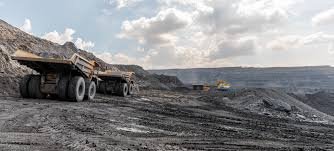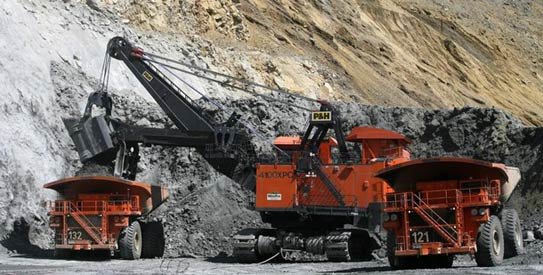Copper exports get a competitive edge as US lifts 50% tariff on refined copper, opening doors for American investment in Pakistan’s mineral sector.
Islamabad — Pakistan is preparing for what could be one of the largest waves of foreign investment in its mining and minerals sector, following a landmark bilateral tariff agreement with the United States. The development is being hailed as a strategic economic opportunity that could transform the country’s long-underutilized mineral wealth into a major driver of growth and exports.
The agreement, announced over the weekend, is expected to give a significant boost to the export of value-added refined copper, a commodity in high demand across the globe. With Pakistan ranked fifth in the world for copper reserves, policymakers see this as a chance to reposition the country from a raw materials supplier to a high-value producer in the global minerals market.
Tariff Breakthrough with the United States
In a report to the National Assembly, Commerce Minister Jam Kamal Khan disclosed that Pakistan’s negotiations with US authorities on reciprocal tariffs have resulted in a key breakthrough — the removal of the hefty 50% tariff previously imposed on imports of refined copper into the US.
“This exemption makes our refined copper far more competitive in one of the most lucrative markets in the world,” Kamal said, stressing that the decision opens the door for expanded trade and investment ties between the two countries.
The US is one of the largest consumers of copper, a metal essential for electrical wiring, renewable energy infrastructure, electric vehicles, and electronics. For Pakistan, this creates an opportunity to move beyond its current export pattern — dominated by shipments of raw copper ore, mostly to China — toward refined, value-added copper products with much higher market prices.
US Interest in Pakistan’s Minerals
Beyond the tariff concession, Washington has expressed direct interest in investing in Pakistan’s copper mining and processing capabilities. According to Kamal, American officials have identified Pakistan’s mineral sector, especially copper, as an attractive destination for long-term investment.
Copper’s role in the global clean energy transition cannot be overstated. It is a critical component in solar panels, wind turbines, electric grids, and electric vehicles — sectors that are projected to see exponential growth over the next two decades. With the US actively seeking reliable suppliers to meet its own clean energy targets, Pakistan’s copper reserves have suddenly gained strategic importance.
“This is not just about economics,” Kamal noted. “It’s about placing Pakistan on the global map as a responsible and dependable supplier of a resource critical to future technologies.”
Government Strategy to Unlock Mining Potential
Recognizing the scale of the opportunity, the government is now moving to overhaul the mining sector. The Geological Survey of Pakistan has been tasked with conducting comprehensive geological mapping to locate and assess untapped mineral deposits. This data will form the foundation for attracting both domestic and foreign investors.
Regulatory frameworks are also being streamlined to cut through red tape and make the investment climate more appealing. Infrastructure development is another key focus, with plans for building dedicated access roads to mining sites and ensuring reliable electricity supply to processing facilities — two of the biggest barriers to industrial growth in remote areas.
The commerce minister emphasized that the long-term goal is to transition from exporting raw ore to producing and exporting refined copper products such as bars, rods, and alloys. This would allow Pakistan to capture greater value from its resources, create skilled jobs, and support local manufacturing industries.
Tariff Reductions Beyond the Mining Sector
The bilateral agreement also includes tariff reductions on other Pakistani exports. The US has lowered tariffs on a range of products — including textiles, one of Pakistan’s largest export categories — from 29% to 19%. This is now the lowest tariff rate among Pakistan’s competitors in the US market, giving the country a critical edge in a highly competitive sector.
Industry experts believe this could lead to a significant increase in Pakistan’s export share in the US, especially for value-added textile products. The combination of reduced tariffs in both mining and manufacturing sectors could set the stage for a broader expansion of trade between the two countries.
Global Demand Outlook for Copper
Global copper demand is expected to surge in the coming years. According to the International Energy Agency, demand for copper could more than double by 2040 due to the rapid expansion of clean energy technologies and the electrification of transport systems. Supply, however, is struggling to keep pace, leading to concerns about a potential shortage.
Pakistan’s abundant reserves — coupled with this new trade framework — position it to not only meet domestic economic needs but also contribute to alleviating the global copper supply gap. This would strengthen the country’s standing in the international minerals market and potentially attract further investment from other nations.
A Turning Point for the Mineral Sector
If fully implemented, the government’s mining sector reforms could transform Pakistan into a major player in the global minerals industry. Increased export earnings from refined copper could help reduce the country’s trade deficit, stabilize foreign exchange reserves, and spur industrial growth in related sectors.
“This initiative aligns perfectly with our national development goals and the world’s sustainability agenda,” Kamal concluded. “By investing in modern technologies and strategic partnerships, Pakistan can unlock the true potential of its mineral wealth — for the benefit of our people and our economy.”























